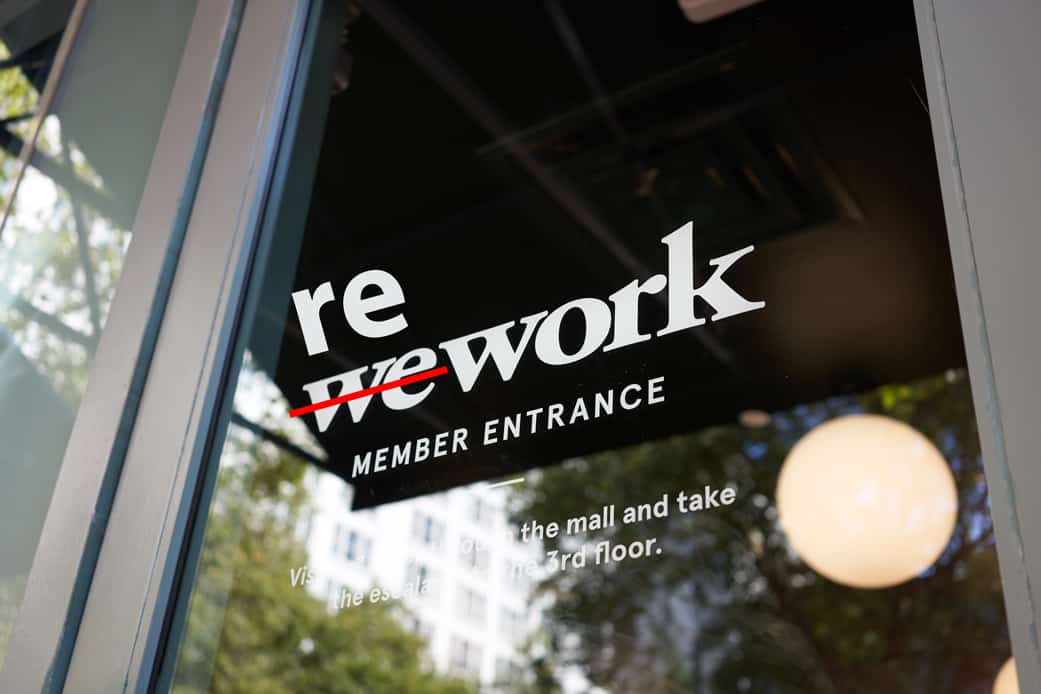- “Companies that refuse to support a remote workforce risk losing their best people and turning away tomorrow’s best talent.” – Stephane Kasriel.
- “One of the secret benefits of using remote workers is that the work itself becomes the yardstick to judge someone’s performance.” – Jason Fried.
- “Productivity increased by 13% when people eliminated commuting and other distractions that regularly occur in a central office.” – Stanford.
- Over 80% of remote workers are satisfied with their jobs.
- 76% of millennials would take a pay cut for more work flexibility.
- People who work remotely at least once a month are 24% more likely to be happy and productive.
- 77% of people said flexible work options would help them be healthier.
- Fewer in-person meetings and more thoughtful, holistic, and creative solutions.
Before Covid-19, most businesses believed that strategy focused on scale, leverage, and centralization were essential market dominance and continuous profit increases. The pandemic (and the affiliated measures to combat the virus) changed the old paradigms.
People who work closely together are more susceptible to epidemics and the transfer of germs as they become ill and lose jobs, business revenues, and cash flow decline. Distribution channels fail and pressure business owners who lay off more workers, delay debt repayments or enter bankruptcy. Government revenues. i.e., tax collections, fall and jeopardize public services, including health care and education. Once started, the vicious cycle is hard to stop.
Lessons Learned and Their Impact on Work in the Future
When economic conditions return to normal, the likelihood that the old strategies will return is low. The impact of the pandemic echoes the devastation of the Great Depression and forever molded the lives of the generations who experienced it. Like our grandparents and parents, those living today are forced to consider their health and financial vulnerability to unexpected events.
This realization ensures that the ways of society and business will be irrevocably changed:
- The general populace will clamber for improved social welfare, extended and better healthcare, guaranteed incomes, and more transparency in government and business decisions that affect them. Businesses – small and large – are likely to experience more regulation and higher taxes.
- Workers, having lost faith in their employers while seeing their savings and retirement accounts reduced, will press for more control over the workplace. Many will turn to freelance work to control their hours and locations. Others will organize to force employers to accommodate a workplace with social distancing and self-quarantine regulations.
- Businesses and governments will be forced to jettison excess costs and fixed assets. The single-purpose manufacturing plant that employed five thousand workers will be downsized either by higher investments in automation or outsourcing.
- Administrative work will experience decentralization by embracing remote work sites. Finding the balance between lower costs and greater agility will torment corporate boards, government officials, and individual business leaders for years.
Distributed Teams is a New Norm
Some organizations, through the foresight of their leaders or pressures from the workforce, currently work on a decentralized, collaborative basis. They integrate remote workers and freelancers with a robust set of communication tools, secure networks, and an evolving set of human resource policies and procedures. Others are recognizing the inevitability of remote digital workplaces, according to Laurel Farrer, CEO of Distribute Consulting. “It went from, ‘Is this happening?’ to ‘It’s here. How can we make this sustainable?’”
Even before the outbreak of Covid-19, remote working was widespread. According to an Upwork study, more than one-half companies are employing remote workers, including tech companies (Google and Amazon), healthcare insurers (UnitedHealth Group and Humana), and retail (Williams-Sonoma). The CEO of Upwork, Stephane Kasriel, claims, “Companies that refuse to support a remote workforce risk losing their best people and turning away tomorrow’s best talent.”
Benefits of Remote Work
Properly implemented, employing remote workers has benefits for employers and workers, in addition to the communities where we live. Less commuting miles benefit the environment, reduce smog, and save community expenses in road and bridge maintenance. Aetna reported that their remote work arrangements had reduced carbon dioxide emissions by almost 47,000 tons by reducing driving by 127 million miles and 5.3 million gallons of gas. Other direct and indirect benefits include:
For Employers
A distributed workforce can help you hire and retain top talent (regardless of location), improve diversity and eliminate bias in employee evaluations, and save money. The identified benefits include
- Expanded talent pool: Employers can recruit workers anywhere in the world with adequate internet services, without the need to deal with government visa and guest worker regulations.
- Lower turnover: A Stanford University report found that companies that allow remote work has a 25% lower employee turnover. Estimated costs to replace a worker average 50% of annual salary for an entry-level employee, 125% for mid-level, and over 200% for a senior executive.
- Workforce diversity. Entrepreneur magazine suggests a natural consequence of remote work is gender, age, and racial diversity.
- Enlightened management. “One of the secret benefits of using remote workers is that the work itself becomes the yardstick to judge someone’s performance,” claims Jason Fried, author of Remote: Office Not Required. Managers learn to motivate more skillfully in the absence of command-and-control structures, focusing on results versus appearance.
- Higher productivity. The Stanford study found that productivity increased 13% when people eliminated commuting and other distractions that regularly occur in a central office.
- Higher employee morale. Over eighty percent of remote workers are satisfied with their jobs, a satisfaction rate higher than the average American, according to an Amerisleep study.
- Smaller environmental footprint. Fewer employees in a central space mean a smaller office space with lower rent and taxes. The Society for Human Resource Management (SHRM) estimates the real estate costs for an onsite worker to be $10,000 annually. Utility costs and other support service costs also decline.
For Employees/Workers
More people than ever (96%) want flexible work arrangements, though slightly more than half of the country’s workers have that option. Remote work is especially popular with millennials who used to prefer WeWork, research indicates that 76% of that generation would take a pay cut for more flexibility. Benefits of distributed work include
- Elimination/reduction in commuting time. The average American worker spends about an hour each day traveling to and from work. Over 3.3 million workers spend at least one hour each way. This time is exclusively spent in the car without considering the unproductive time in the office spent cooling off from the frustration of rude drivers, traffic jams, and red lights.
- Lower housing costs. The high cost of housing in many American cities forces workers to choose between a small residence with a minimum commute or a larger, more comfortable home with a long commute. A distributed workforce allows workers to live where they want without the hassle and costs of a long commute.
- Increased family time. Everyone has a spouse, children, parents, or friends with whom they enjoy spending time. An hour or two of extra flexibility each day could be the difference between sitting down to dinner with our kids and spending that time commuting. Being available in the case of an emergency or a dance recital is a benefit, too.
- Improved physical and mental health. People who work remotely at least once a month are 24% more likely to be happy and productive. Professionals spend the biggest portion of their day, energy, and focus at work every day. By offering flexible work options, companies are signaling to their employees that they can and should devote more time to health and wellness, this helps reduce the psychological impact of the Pandemic. That’s likely why in a survey conducted by Mental Health America 77% of people said flexible work options would help them be healthier.
Allow time to think for the thoughtful. Creativity or solutions to tough problems are often skewed towards those who can provide them quickly during brainstorming sessions in a packed conference room with artificial timelines. Those types of setups amplify the voices of those who speak the loudest but many creative and analytical people, need time to process information and come up with their most creative ideas or solutions to problems, sometimes that happens while walking, taking a shower, or spending time alone.
Obstacles of Remote Work
A remote workforce is not a panacea for all companies, despite its advantages. Failure to anticipate and prepare for the inevitable issues will likely lead to extra costs, employee dissatisfaction, and eventual reversal of the decision. However, the risks of not employing a distributed work culture in an organization may be equally dangerous. When considering a transition to the use of remote workers, consider remedies for:
- Inadequate training. Coordinating across time zones – scheduling meetings or informal conversations when both teams are online at the same time can be especially frustrating. Jeanne Meister, a founding partner of Future Workplace, claims that many companies fail to provide the right tools or training to their employees for the new distributed environment. She notes that many remote workers do not know how to set up teleconferences or video calls, essential for collaboration.
- Resistance to online meetings: Many smart and forward-thinking organizations are replacing meetings with posts on Slack or Google Chat requesting the employees to contribute their ideas and solutions. Organizations are also experimenting with Augmented Reality for meetings. Even though, this may sound like a slow process, in many cases provide faster solutions when people are able to think about the problem and provide the solution on their own time. Harvard Business Review conducted a survey with 182 senior managers in a range of industries: 65% said meetings keep them from completing their own work. 71% said meetings are unproductive and inefficient. 64% said meetings come at the expense of deep thinking. 62% said meetings miss opportunities to bring the team closer together.
- Supervisor resistance. Supervisors find it hard to manage based on data rather than direct contact. Many believe that direct supervision is necessary to maintain productivity and resent the loss of control in remote work environments. According to Elaine Varelas, managing partner at Keystone Partners, “Many managers find it very difficult to manage remote workers and are used to managing by facetime and lots of reporting in quick meetings. They assess contribution by knowing you get in early and leave late. Because of their lack of skill, they choose not to offer or allow remote work, or even flexible schedules.” Poor communications. An effective communications system includes a secure Cloud-based network connected to multiple platforms (desktops. Tablets, mobile phones) and a centralized backup server. Project management software (Monday or Asana) enables remote workers to easily collaborate using integrated office software such as Microsoft Office Online or Google Docs. Custom software applications can be expanded to include communication tools between the staff as work is moved through the company’s unique business workflow.
- Increased security risks. Concerns about data encryption, the security of wireless connections, the use of removable media, and potential loss or theft of devices and data are natural when connecting with offsite locations. According to a 2018 survey, 57% of CIOs suspect their mobile workers have been hacked or the cause of security problems. Before relying on a remote workforce, invest in the services of a qualified IT security expert to minimize the risk of unwelcome intruders.
Employee isolation. Isolation can be a problem with a distributed network of employees. Isolated employees can feel that they do not get the materials or information they need, or their achievements are unrecognized. Building rapport when everyone is not in the same office can be difficult, but the results are worth the effort. The keys to an engaged, committed workforce are (a) trained supervisors who can effectively and regularly interact with the team, (b) a culture that encourages communication and interaction, and (c) the right software in handhold employees through the workflow processes, validate their inputs, reducing employee frustration, errors and ensuring they perform their duties effectively with minimum supervision.
Final Thoughts
Each organization and the remote workers need time, the right software, and training to adapt and learn how to share and collaborate in a distributed team environment, communicate effectively, and grow a consistent culture across distances. The most effective managers do not try to make the remote workforce conform to the headquarters’ culture, seek to find and share successful practices across all locations. Management must embrace “we” rather than an “us vs. them” culture.
After all, every organization’s employees work remotely from time to time. Business travel takes members outside of the office, and everyone works at home occasionally for a work/life balance. Companies that embrace both structure and flexibility are best positioned for the unknown future.






